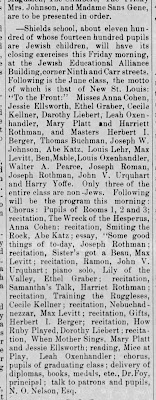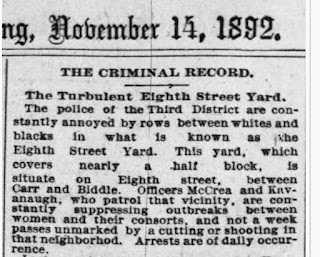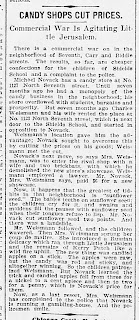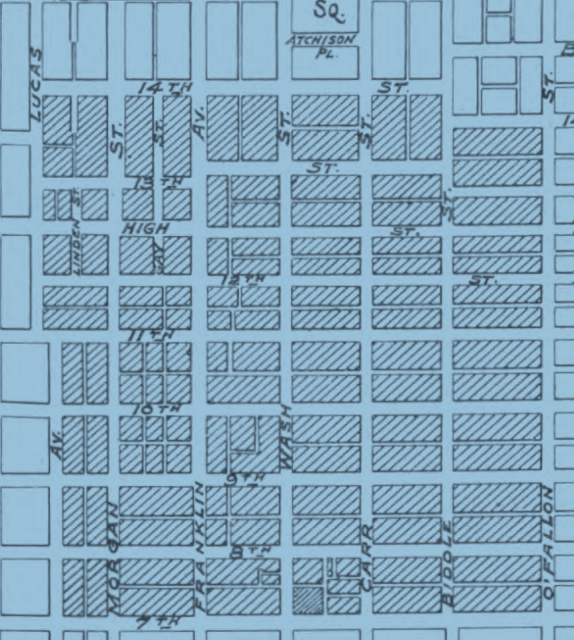Graduates of Shields School - 1906

The Jewish Voice St. Louis, Missouri June 15, 1906 - Page 7 -- Shields school, about eleven hundred of whose fourteen hundred pupils are Jewish children, will have its closing exercises this Friday morning, at the Jewish Educational Alliance Building, corner Ninth and Carr streets. Following is the June class, the motto of which is that of New St. Louis: "To the Front:" Misses Anna Cohen, Jessie Ellsworth, Ethel Graber, Cecile Kellner, Darothy Liebert, Leah Oxenhandler, Mary Piatt and Harriett Rothman, and Masters Herbert I Berger, Thomas Buchman, Joseph W Johnson, Abe Katz, Louis Lehr, Max Levitt, Ben Mable, Louis Oxenhandler, Walter A. Pearce, Joseph Roman, Joseph Rothman, John V. Urquhart and Harry Yoffe. Only three of the entire class are non-Jews. Following will be the program this morning: Chorus: Pupils of Rooms 1, 2 and 3 recitation; The Wreck of the Hesperus, Anna Cohen; recitation, Smiting the Rock, Abe Katz; essay, "Some good things of to-day, Joseph Rothman;...



